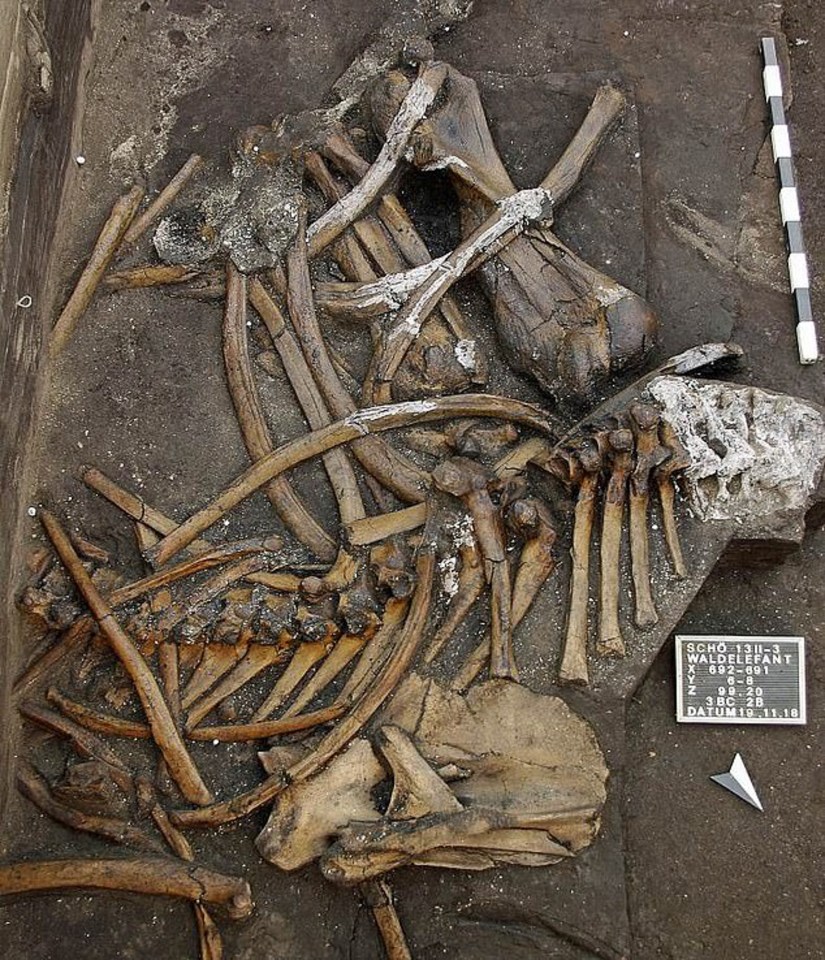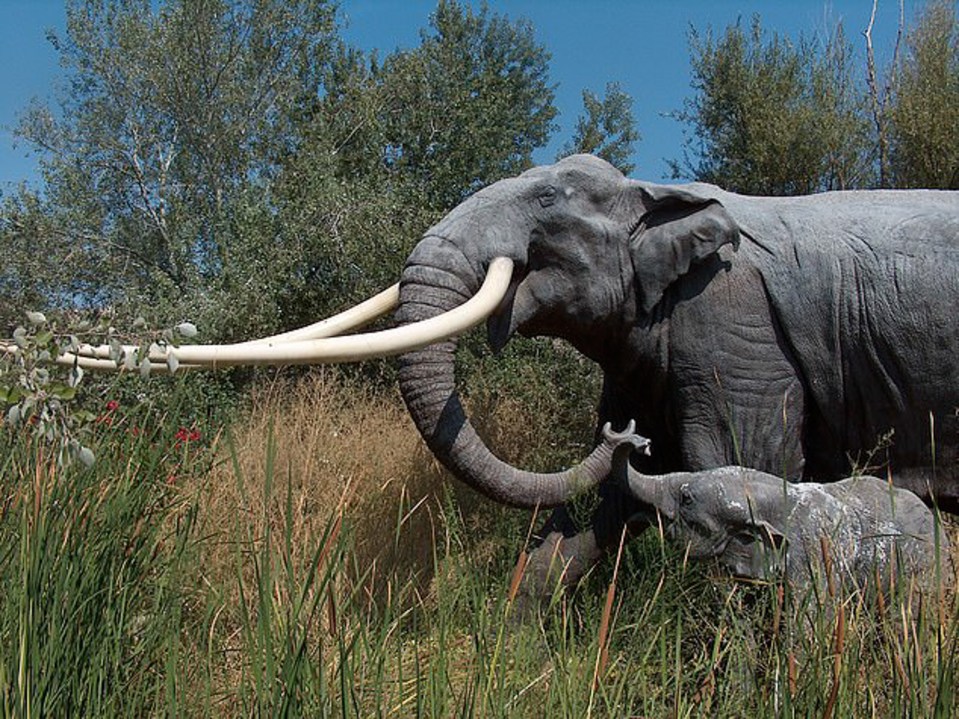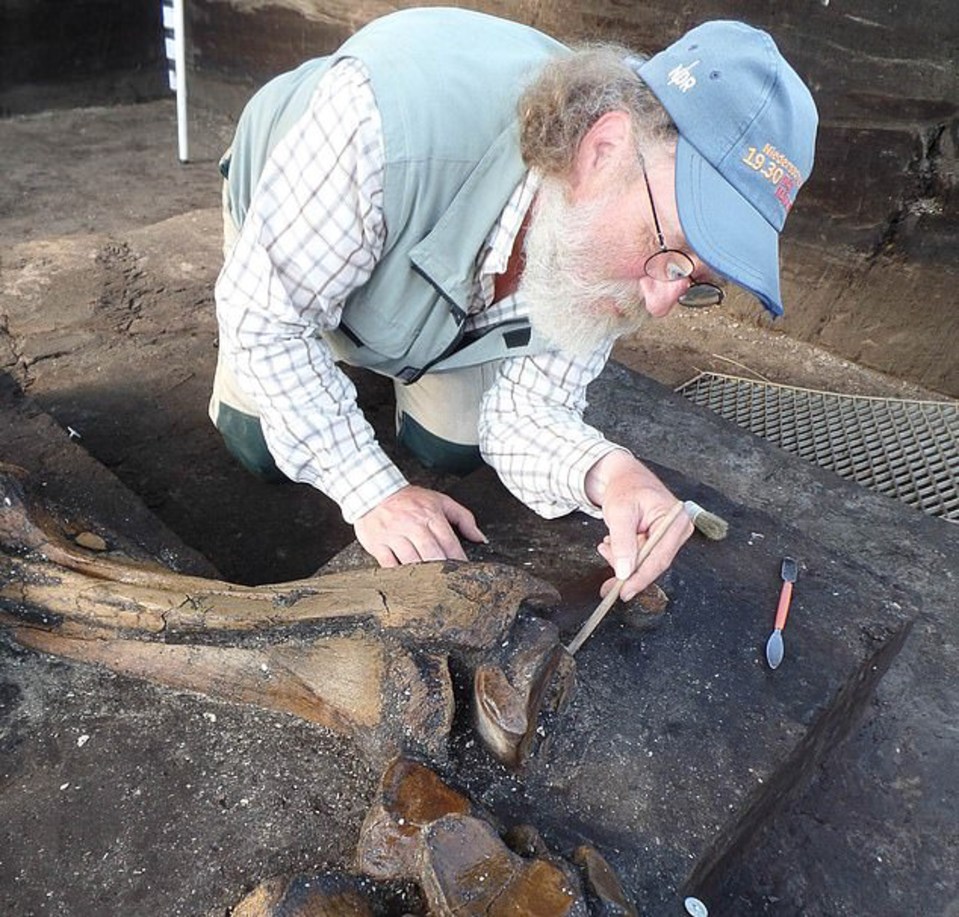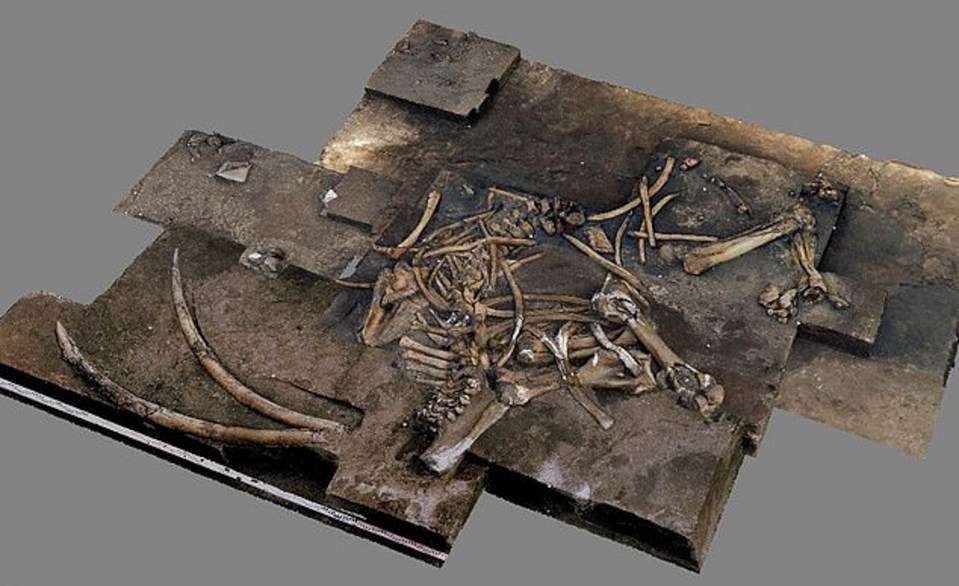Huge 300,000-year-old ELEPHANT skeleton with 8-foot tusks found in Germany – and it was eaten by Stone Age hunters

THE skeleton of a 300,000-year-old elephant with giant tusks has been unearthed in Germany.
The amazing ancient remains show that the creature had been killed and eaten by Stone Age hunters.
The elephant skeleton with its eight-foot tusks was found near an ancient lake.
It's almost completely intact with three legs, a lower jaw bone and ribs easily distinguishable.
Around 30 small flint flakes, sharpening tools and even bit marks around it suggest it was feasted upon by hungry hunters.
The creature was a species called the Eurasian straight-tusked elephant which is now extinct.
This type of elephant once roamed across Europe and Western Asia, during the Middle and Late Pleistocene (781,000–30,000 years before present).
The recent discovery was made at a site in the German town of Schöningen.
Archaeologists previously uncovered three sabre-toothed cats skeletons and a 300,000-year-old hunting spear at the same site.
The elephant skeleton seems to have been kept so well-preserved since the Middle Palaeolithic era because of the water-saturated sediment it was covered in.
It was larger than today's African elephant, weighing 6.8 tonnes and standing 10 feet tall.
This is according to researchers from the Senckenberg Centre for Human Evolution at the University of Tübingen, Germany, who made the discovery.
They think the elephant was female and assume it was getting old as it had worn teeth.
The elephant may have even died of old age rather than hunting.
Scavengers may then have eaten its flesh.
Head of the excavation, Jordi Serangeli, said: "The Stone Age hunters probably cut meat, tendons and fat from the carcass.
"We do not seek to rule out that extremely dangerous elephant hunts may have taken place, but the evidence often leaves us in some doubt."
The human ancestors that ate from the carcass were likely either Homo heidelbergensis, which Neanderthals evolved from, or early Neanderthals.
Homo sapiens were yet to evolve at this point in history.
Straight tusk elephants would have been a big part of the environment for our ancient European ancestors.
Researchers think the climate would have been similar to what it is today but dangerous creatures would have roamed around just like in the Serengeti.
A timeline of life on Earth
The history of the planet in years...
- 4.6billion years ago – the origin of Earth
- 3.8billion years ago – first life appears on Earth
- 2.1billion years ago – lifeforms made up of multiple cells evolve
- 1.5billion years ago – eukaryotes, which are cells that contain a nucleus inside of their membranes, emerge
- 550million years ago – first arthropods evolve
- 530million years ago – first fish appear
- 470million years ago – first land plants appear
- 380million years ago – forests emerge on Earth
- 370million years ago – first amphibians emerge from the water onto land
- 320million years ago – earliest reptiles evolve
- 230million years ago – dinosaurs evolve
- 200million years ago – mammals appear
- 150million years ago – earliest birds evolve
- 130million years ago – first flowering plants
- 100million years ago – earliest bees
- 55million years ago – hares and rabbits appear
- 30million years ago – first cats evolve
- 20million years ago – great apes evolve
- 7million years ago –first human ancestors appear
- 2million years ago – Homo erectus appears
- 300,000 years ago – Homo sapiens evolves
- 50,000 years ago – Eurasia and Oceania colonised
- 40,000 years ago – Neandethal extinction
Most read in Science
In other archaeology news, four 'blank' fragments of the infamous ancient Dead Sea Scrolls have revealed hidden text.
Read More on The Sun
The oldest bones of modern humans ever found in Europe have been discovered in a Bulgarian cave.
And, skeletons found in a mass grave reveal the horrors endured by African slaves.
We pay for your stories! Do you have a story for The Sun Online Tech & Science team? Email us at tech@the-sun.co.uk


















